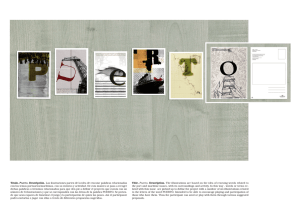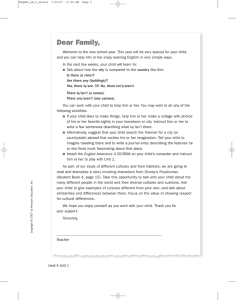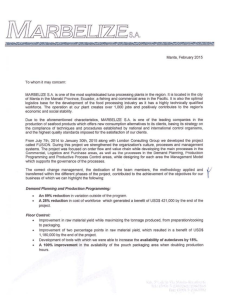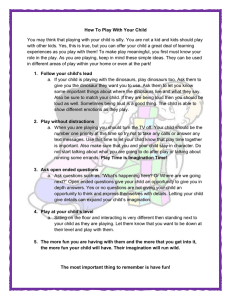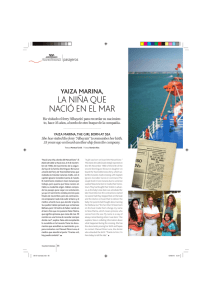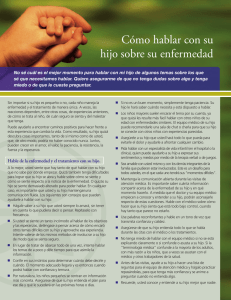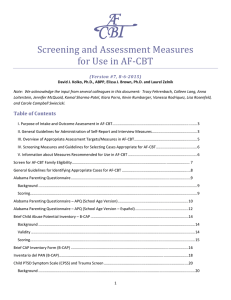extracto del libro (en )
Anuncio
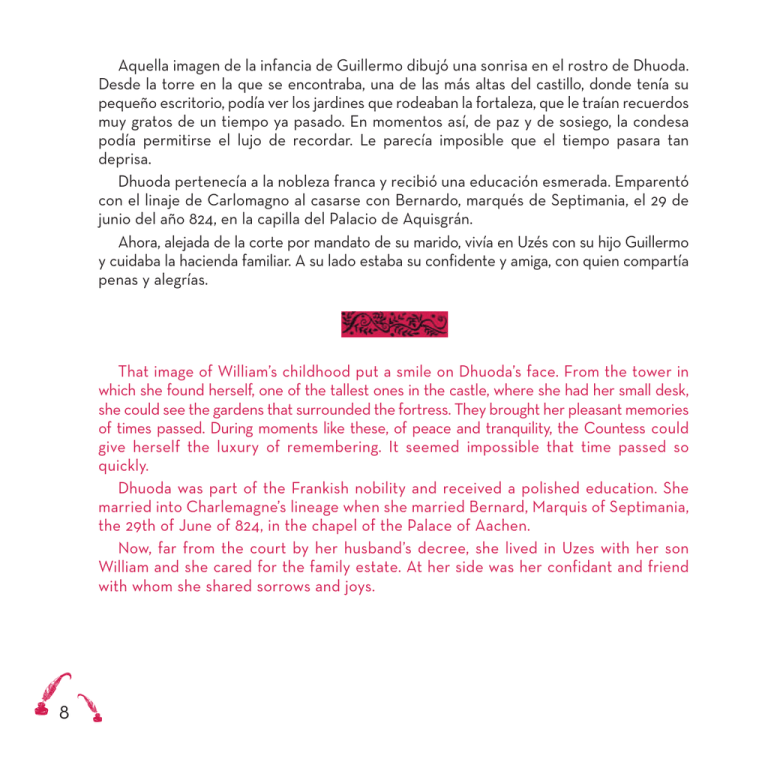
Aquella imagen de la infancia de Guillermo dibujó una sonrisa en el rostro de Dhuoda. Desde la torre en la que se encontraba, una de las más altas del castillo, donde tenía su pequeño escritorio, podía ver los jardines que rodeaban la fortaleza, que le traían recuerdos muy gratos de un tiempo ya pasado. En momentos así, de paz y de sosiego, la condesa podía permitirse el lujo de recordar. Le parecía imposible que el tiempo pasara tan deprisa. Dhuoda pertenecía a la nobleza franca y recibió una educación esmerada. Emparentó con el linaje de Carlomagno al casarse con Bernardo, marqués de Septimania, el 29 de junio del año 824, en la capilla del Palacio de Aquisgrán. Ahora, alejada de la corte por mandato de su marido, vivía en Uzés con su hijo Guillermo y cuidaba la hacienda familiar. A su lado estaba su confidente y amiga, con quien compartía penas y alegrías. That image of William’s childhood put a smile on Dhuoda’s face. From the tower in which she found herself, one of the tallest ones in the castle, where she had her small desk, she could see the gardens that surrounded the fortress. They brought her pleasant memories of times passed. During moments like these, of peace and tranquility, the Countess could give herself the luxury of remembering. It seemed impossible that time passed so quickly. Dhuoda was part of the Frankish nobility and received a polished education. She married into Charlemagne’s lineage when she married Bernard, Marquis of Septimania, the 29th of June of 824, in the chapel of the Palace of Aachen. Now, far from the court by her husband’s decree, she lived in Uzes with her son William and she cared for the family estate. At her side was her confidant and friend with whom she shared sorrows and joys. 8 ¡Cómo le gustaría que su hijo pudiera escucharla y recibir ese mensaje amoroso! Ya que la separación era insalvable, Dhuoda pensó otra manera de estar cerca de su hijo: escribiendo todos aquellos pensamientos. Tenía la suerte de poder contar con el apoyo de su mejor amiga, que la ayudó a superar el dolor animándola a que escribiera los consejos que podían contribuir en la distancia a la educación de su hijo. Y así, con unas y otras historias, recuerdos, consejos, enseñanzas y mucho amor materno, Dhuoda empezó a escribir el Liber manualis el 30 de noviembre de 841, el día siguiente del quince cumpleaños de Guillermo, y lo terminó el 2 de febrero de 843. Después se lo envió, invitándole a compartirlo con su hermano cuando alcanzara la edad de leer y de entender lo que ella había escrito. How she wished that her son could hear her and receive this message of love! Since the separation was insurmountable, Dhuoda thought of another way to be close to her son: writing all those thoughts down. She was lucky in that she could count on her best friend’s support, who helped her overcome the pain encouraging her to write the advice that could contribute to the education of her son from a distance. And this is how, with stories, memories, advice, teachings and much maternal love, Dhuoda started to write Liber manualis on the 30th of November of 841, the day after William’s fifteenth birthday. She finished it the 2nd of February of 843. Later she sent it to William, inviting him to share it with his brother when he was old enough to read and understand what she had written. 44

